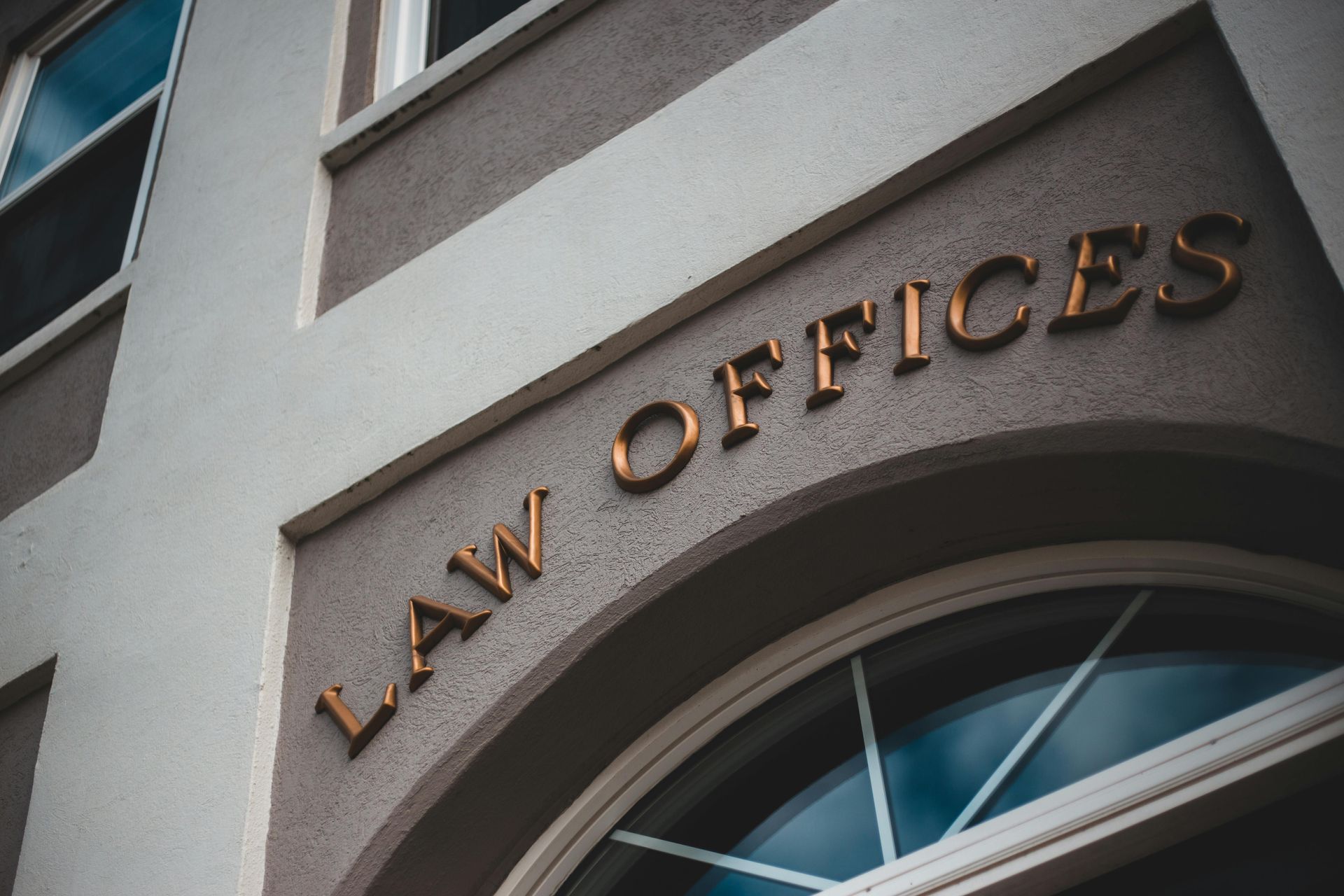Forfeitures and Terminations of Texas Business Entities
Ensure your business is built on a solid foundation with the help of skilled attorneys who specialize in entity formation, litigation, and safeguarding operations for long-term success.
Understanding Entity Forfeiture and Reinstatement in Texas
Businesses operating in Texas often establish formal entities like LLCs, corporations, or partnerships. While these structures provide significant benefits, they also come with responsibilities. A failure to meet legal obligations—such as paying franchise taxes—can lead to forfeiture or termination of an entity. However, understanding the nuances of forfeiture and reinstatement can help businesses navigate these challenges effectively. Neither the forfeiture of corporate privileges by the comptroller nor the forfeiture of a corporation's charter by the secretary of state extinguishes the corporation as an entity. See Hinkle v. Adams, 74 S.W.3d 189, 193 (Tex.App.-Texarkana 2002, no pet.); Lighthouse Church of Cloverleaf v. Tex. Bank, 889 S.W.2d 595, 601 (Tex.App.-Houston [14th Dist.] 1994, writ denied). Moreover, if a corporation files its delinquent reports and pays its delinquent franchise taxes, its corporate privileges and charter are retroactively reinstated. Hinkle, 74 S.W.3d at 193–94. Parker Cty.'s Squaw Creek Downs, L.P. v. Watson, No. 2-08-255-CV, 2009 WL 885941, at *6 (Tex. App.—Fort Worth Apr. 2, 2009, pet. denied
Tax Forfeiture of a Business Entity in Texas
Under the Texas Tax Code (§171.301–.3015), the State Comptroller may initiate the forfeiture of an entity's right to do business if franchise taxes remain unpaid. Additionally, the Texas Secretary of State may forfeit an entity’s charter, certificate, or registration due to delinquent taxes (§171.309).
Key Consequences of Tax Forfeiture:
- Loss of Legal Standing: Entities forfeited for tax delinquency lose the ability to initiate lawsuits.
- Personal Liability: Directors and officers can become personally liable for the entity’s debts, including unpaid taxes (Texas Business Organizations Code (TBOC) §§171.252 and 171.255).
Download Texas Secretary Of State Involuntary
Termination of Business Entity Article.
Reinstatement After Tax Forfeiture
To reinstate an entity, businesses must:
- File all overdue tax reports.
- Pay all outstanding taxes and fees.
- Submit reinstatement paperwork to the Secretary of State (TBOC §171.312).
Once reinstated, the entity regains its corporate privileges retroactively, as if the forfeiture never occurred. The Texas Court of Appeals has upheld this principle, ensuring entities can continue as though no interruption existed (Manning v. Enbridge Pipelines, 345 S.W.3d 718). Simply, after reinstatement, the revived rights relate back to the point of the delinquency. Flameout Design & Fabrication, Inc. v. Pennzoil Caspian Corp., 994 S.W.2d 830, 839 (Tex.App.-Houston [1st Dist.] 1999, no pet.). Manning v. Enbridge Pipelines (E. Tex.) L.P., 345 S.W.3d 718, 723 (Tex. App.—Beaumont 2011, pet. denied).
Voluntary Termination or Involuntary Termination by the Secretary of State
Entities in Texas can also voluntarily terminate their status by filing a certificate of termination (TBOC §11.101). Conversely, the Secretary of State may involuntarily terminate an entity for reasons such as:
- Failure to maintain a registered agent or office (TBOC §11.251).
- Non-payment of required fees (TBOC §11.252).
- In such cases, a certificate of termination is filed, ending the entity's legal existence.
Grace Period During Forfeiture
Under Texas law, any individual or entity can file a lawsuit against a terminated business during the three-year grace period following termination, unless the claim has been extinguished. A claim may be extinguished if the claimant either fails to present the claim or does not file an action after receiving notice from the terminated entity that the claim would be handled under Section 11.358 of the Texas Business Organizations Code. If the entity rejects the claim, the claimant has 180 days to file a lawsuit, provided the three-year grace period does not expire within that timeframe. The lawsuit must be filed before the earlier of these two deadlines: the end of the 180-day period or the expiration of the three-year grace period (TBOC §11.359(b)).
A reinstatement “generally has retroactive effect in the sense that the [limited liability company]’s existence is deemed to have continued uninterrupted from the date of termination.” 20 Elizabeth S. Miller and Robert A. Ragazzo, Texas Practice Series: Business Organizations § 21.20 (3d ed. 2012). Because Plaintiff's entity status as a limited liability company was reinstated within three years of its involuntary termination, the Court finds that Plaintiff's existence is deemed to have continued uninterrupted from the date of termination. See Tex. Bus. Orgs. Code Ann. § 11.253(d). Accordingly, the Court finds that Plaintiff has the legal capacity to maintain the present action. See id.; 20 Elizabeth S. Miller and Robert A. Ragazzo, Texas Practice Series: Business Organizations § 21.20 (3d ed. 2012); see also Acme Color Art Printing Co. v. Brown, 488 S.W.2d 507, 508–09 (Tex. Civ. App.—Dallas 1972, writ ref'd n.r.e.) (Plaintiff's entity status was forfeited for failure to pay franchise taxes in April 1971, plaintiff filed suit against defendant in March 1972, and plaintiff's charter was reinstated in April 1972. The court found that because plaintiff's charter had been reinstated, it had standing to proceed with the suit, “regardless of whether it had such standing ... when the petition was filed.”); Rosewood Prop. Co. v. Hardy, No. 05-94-01227-CV, 1995 WL 479656, at *7 (Tex. App.—Dallas Aug. 10, 1995, no writ) (not designated for publication) (noting that “a corporation whose charter has been forfeited for failure to pay franchise taxes and is later reinstated upon payment of those taxes can maintain a suit commenced before reinstatement”). Vernon Feeders, LLC v. Cabaniss Dairy, LLC, No. 7:13-CV-00069-O, 2013 WL 12137768, at *1 (N.D. Tex. July 9, 2013).
LET US GET YOU RESULTS. CONTACT OUR DALLAS, TEXAS BUSINESS ATTORNEYS TODAY!
A business formation that fails to address your business's needs offers little protection. Your company's operations hinge on the proper management of your business, underscoring the importance of hiring a skilled business attorney. At Wilson Whitaker Rynell, we bring expertise in forming, litigating, and protecting your business.
By choosing Wilson Whitaker Rynell, you gain a strategic partner dedicated to crafting practical solutions tailored to your business's unique requirements!
Businesses Need Strong Legal Counsel
Effective support for your business enitty is crucial for businesses of all sizes. Our team of experienced corporate and litigation attorneys at Wilson Whitaker Rynell, recognizes the significance of robust contracts in safeguarding your interests. Whether you're an individual, small business, or large corporation, our business lawyers prioritize precision and clarity to minimize disputes and legal challenges.
Proactively addressing your business's needs is key to reducing the risk of expensive legal disputes and safeguarding your interests.
Contact our skilled business attorneys today to explore how we can fortify your business!
Frequently Asked Questions
Corporate Reinstatement: A Critical Lifeline
Under TBOC §11.253, reinstatement before the third anniversary of an entity’s termination restores its status retroactively. This principle applies whether the termination resulted from tax delinquency or other causes. For instance, courts have affirmed that reinstated entities can sue or defend as if their rights were uninterrupted (Hinkle v. Adams, 74 S.W.3d 189). Moreover, reinstated entities can maintain actions initiated before or during the forfeiture period (Parker County's Squaw Creek Downs, L.P. v. Watson). After reinstatement, the revived rights relate back to the point of the delinquency. Flameout Design & Fabrication, Inc. v. Pennzoil Caspian Corp., 994 S.W.2d 830, 839 (Tex.App.-Houston [1st Dist.] 1999, no pet.). Manning v. Enbridge Pipelines (E. Tex.) L.P., 345 S.W.3d 718, 723 (Tex. App.—Beaumont 2011, pet. denied).
Practical Implications for Businesses
Retroactive Reinstatement Protects Legal Rights
Businesses reinstated within three years of termination can revive claims and defenses as if the forfeiture never happened. For example, courts have held that reinstated entities retain the right to defend lawsuits or assert claims, regardless of when the causes of action arose. Under the analogous statute that applies to corporations, “[o]nce the right to sue or defend is revived, the corporation may sue or defend all causes of action, regardless of whether such causes arose before or during the period of forfeiture.” G. Richard Goins Constr. Co., Inc. v. S.B. McLaughlin Assocs., Inc., 930 S.W.2d 124, 128 (Tex.App.-Tyler 1996, writ denied). Revival reinstates all rights “as if the disability had never existed.” Id. Manning v. Enbridge Pipelines (E. Tex.) L.P., 345 S.W.3d 718, 723 (Tex. App.—Beaumont 2011, pet. denied).
Personal Liability During Business Forfeiture
While forfeiture is in effect, officers and directors may face personal liability for the entity’s debts. Reinstatement, however, does not erase this liability for the forfeiture period.
Contact Our Business Lawyers to Talk About
Defending Your Business.
Seeking help with litigation for your business or professional dealings? Contact the business attorneys at
Wilson Legal Group!
Schedule your initial consultation today!
Contact Us
or call
972-248-8080
Business & Contract Law Blogs


















